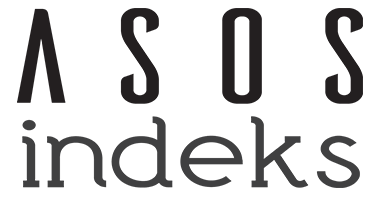Teacher Opinions on Peer Bullying Among Primary School Students
Keywords:
Peer Bullying, Teacher Opinion, ChildhoodAbstract
The aim of this study is to examine the opinions of primary school teachers about peer bullying. The study group was formed by using the typical case sampling method, one of the purposive sampling methods. The study group was carried out on primary school class teachers with different professional experience, age, gender and experience. 12 classroom teachers were included in the study. This research was created by using the case study method, which is one of the qualitative research methods. The data collection tool consists of socio-demographic questions and a semi-structured interview form consisting of 11 open-ended questions developed by the researcher. In the presentation of the data, the forms were evaluated by descriptive analysis method, themes were determined according to the interview questions and coded. In order to ensure the internal validity of the research, a data collection form was prepared in accordance with the scientific process. To ensure internal credibility, the codes regarding the views on peer bullying were supported with direct quotations. The research method and research process are explained in detail to ensure external reliability and validity. In addition, in order to increase the reliability of the study, the analyses of an expert were taken into account and common points were determined.
As a result of the research, teachers generally defined the definition of peer bullying as brute force, verbal violence, pressure, communication difficulties. When we look at the opinions of the students who apply peer bullying about their age and gender, the majority of the students who apply the bullying are female students and 7-8 age group students. When we look at the opinions of the students who are exposed to peer bullying about their gender and age range, it is seen that they have female students and the age range of 7-8. When we look at the characteristics of the students who practice peer bullying, they expressed them as students with family problems, anger problems, physically strong, students who cannot express themselves, students who are in good financial condition, and students with low success. When we look at the characteristics of the students who are exposed to peer bullying, they stated that they are shy and introverted, physically weak, insecure, and show submissive behavior. Teachers said that they faced types of bullying such as physical bullying, verbal bullying, exclusion, and unauthorized use of items, respectively. Regarding the causes of peer bullying, the teacher presented reasons such as family problems, social media and television, environmental influence, desire to attract attention. They also found that students engaged in peer bullying behavior when they got angry, when they disagreed, when they didn't want to, when they played games, when they wanted attention. At the same time, at the end of the research, teachers said that they could be prevented by cooperating with the guidance service, cooperating with the family, and doing in-class activities to combat peer bullying. As other solution suggestions, they expressed opinions such as family education, seminars, one-on-one dealing and disciplinary action.
References
Atik, G., ve Kemer, G. (2008). “İlköğretim İkinci Kademe Öğrencileri Arasındaki Zorbalığı Yordamada Problem Çözme Becerisi, Sürekli Öfke-Öfke İfade Tarzları ve Fiziksel Öz Yeterliğin Rolü”. Dokuz Eylül Üniversitesi Buca Eğitim Fakültesi Dergisi, 23, 198-206.
Aydın, A. (1999). “Gelişim ve Öğrenme Psikolojisi”. Ankara:Anı Yayıncılık.
Baldry, A. C. (2003). Bullying in schools and exposure to domestic violence. Child Abuse & Neglect, 27(7), 713-732.
Budak, S. (2000). “Psikoloji Sözlüğü”. Ankara: Bilim ve Sanat Yayınevi.
Celep, C. (1997). “Öğretmenlik Yeterlilik Duygusu”. Yaşadıkça Eğitim Dergisi, Ocak/ Şubat, İstanbul.
Cole, D. A., Sinclair-McBride, K. R., Zelkowitz, R., Bilsk, S. A., Roeder, K., ve Spinelli, T. (2016). “Peer victimization and harsh parenting predict cognitive diatheses for depression in children and adolescents”. Journal of Clinical Child & Adolescent Psychology, 45, 668–680.
Çınkır, Ş. ve Karaman- Kepenekçi, Y. (2003). “Öğrenciler Arası Zorbalık. Kuram ve Uygulamada Eğitim Yönetimi”. 34(9). 236- 253.
Çubukçu, Z., ve Dönmez, A. (2012). “İlköğretim Okul Yöneticilerinin Şiddet Türlerine Yönelik Görüşleri ve Şiddetle Başa Çıkma Yöntemleri”. Kuram ve Uygulamada Eğitim Yönetimi Dergisi, 18(1), 37-64.
Genç, G. (2007). “Genel Liselerde Akran Zorbalığı ve Yönetimi”. Yayınlanmamış doktora tezi,İnönü Üniversitesi Sosyal Bilimler Enstitüsü, Malatya.
Griffin, R. S. ve Alan, M. G. (2004). Childhood bullying: Current empirical findings and future directions for research.” Aggression and Violent Behavior”, 9(4), 379-400.
Gültekin Akduman, G. (2010). “7-8 Yaş Grubu Çocuklarda Akran İstismarı ve Kendi Çözüm Önerileri”. Kuramsal Eğitimbilim, 3(2), 13-26.
Güvenir T. (ed.) (2004) “Okulda Akran İstismarı”, Ankara: Kök Yayıncılık.
Hazler, R.J., Miller, D.L., Carney, J.V. ve Green, S. (2001). “Adult recognition of school bullying situations”. (Electronic version) Educational Research. 43, 133-146.
Kaya, A., Macit, Z. B., ve Siyez, D. M. (2012). “Bir İlköğretim Okulu Psikolojik Danışma ve Rehberlik Servisine Yapılan Başvuruların İncelenmesi”. İlköğretim Online, 11(4), 1087-1100.
Atbaşı, Z. , Karaca, M. & Karasu, N. (2019). “Sosyal Geçerliğin Türkiye’de Özel Eğitim Tez Çalışmalarına Yansıması” . Abant İzzet Baysal Üniversitesi Eğitim Fakültesi Dergisi , 19 (4) , 1589-1601 . DOI: 10.17240/aibuefd.2019..-522914.
Kepenekçi-Karaman, Y. (2003). “Kuram ve Uygulamada Eğitim Yönetimi”. İlköğretimde İnsan Hakları Ve Sorumluluk Eğitim Dergi Park, 34,1-22.
Külcü, Ö. T. (2015). “Kültürel Miras Kavramının Eğitim Açısından Önemi”. Akademia Disiplinlerarası Bilimsel Araştırmalar Dergisi , 1 (1) , 27-32 . Retrieved from https://dergipark.org.tr/tr/pub/adbad/issue/28277/300234.
Olweus, D. (2005). “Bullying at School”. Cornwall: Blackwell Publishing.
Önder, F.C.,Yurtal, F. ve Özsezer S. (2016).”Okullarda Zorbalığı Önleme ve Müdehale Etmeye Yönelik Yapılan Uygulamalar”: Psikolojik danışma görüşleri, The Journal of Acedemic Social Science Studies, 52:57-70.
Özkan, Y., ve Çifci, E., G. (2010). “Düşük Sosyo-Ekonomik Düzeydeki İlköğretim Okullarında Akran Zorbalığı”. İlköğretim Online, 9(2), 576-586.
Pişkin, M. (2002). “Okul Zorbalığı Tanımı, Türleri, İlişkili Olduğu Faktörler ve Alınabilecek Önlemler”.Kuram ve Uygulamada Eğitim Bilimleri, 2(2), 531-562.
Sargı ve Çetinkaya, (2010).”Akran Baskısını Azaltmada Grupla Psikolojik Danışmanın Etkililiği”, Selçuk Üniversitesi Sosyal Bilimler Enstitüsü Dergisi. 23(1), 185-192.
Satan, A. (2011). “Okulda Zorbalığın Aktörleri”. Turan Stratejik Araştırmalar Merkezi Dergisi, 3(10), 55-66. 11.01.2021 tarihinde http://www.turansam.org adresinden erişilmiştir.
Schwartz, D. , Dodge, K. A. & Coıe, J. D. (1998). “Social-Cognitive and Behavioral Correlates of Aggression and Victimization in Boys’ Play Groups”. Journal of Abnormal Child Psychology, 26, 431-440.
Sherer,Y.C. and Nickerson,A.B.(2010). “Anti-bullying Practices in American Schools: Perspectives of School Psychologists”. Psyhology in the Schoool, 47/3, 217-229.
Swearer,S.M., Espelage, D.L., Vaillancourt, T. and Hymel,S. (2010).”What can be done about School Bullying?”.Linking Research to Educational Practic. Educational Researcher, 39(1),38-47.
Yelboğa, N. ve Koçak, O. (2019). “Ergenlerde Akran Zorbalığını Yordayan Bazı Faktörlerin Zorba ve Mağdur Bireyler Açısından Değerlendirilmesi”. OPUS–Uluslararası Toplum Araştırmaları Dergisi, 13(19), 2286-2320. DOI: 10.26466/opus.543567.
Yöndem, Z. D. & Totan, T. (2007). “Ergenlerde Zorbalığın Anne Baba ve Akran İlişkileri Açısından İncelenmesi”. Ege Eğitim Dergisi,8(2),53-68 Retrieved from https://dergipark.org.tr/tr/pub/egeefd/issue/4913/67268.
Yurtal, F. ve Cenkseven, F. (2007). “İlköğretim Okullarında Zorbalığın Yaygınlığı ve Doğası” Kuram ve Uygulamada Eğitim Yönetimi Dergisi, 28, 1-13.
Downloads
Published
How to Cite
Issue
Section
License
Copyright (c) 2022 International Journal of Trends and Developments in Education

This work is licensed under a Creative Commons Attribution-NonCommercial-NoDerivatives 4.0 International License.
For more information click here.






